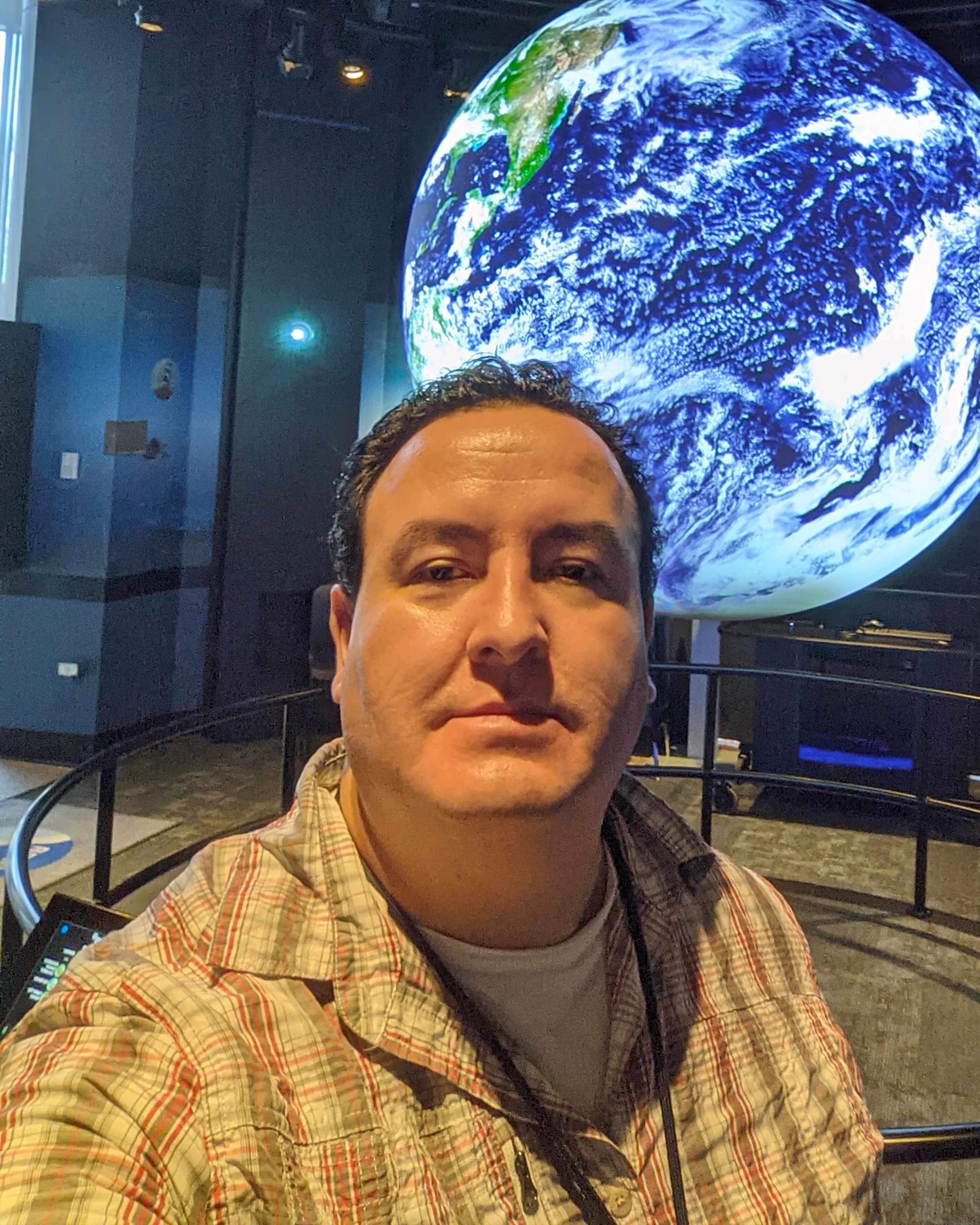Celebrate NOAA DataFest and World Space Week 2024 with the National Oceanic and Atmospheric Administration (NOAA)! This year’s World Space Week theme, Space & Climate Change, highlights the essential role of space science in understanding and addressing the challenges of climate change on Earth. Join us for “Planetary Climates: Exploring Climate on Other Planets and Our Earth,” a compelling live presentation featuring experts Juan Pablo Hurtado and Rafael de Ameller.
Whether you’re a student, educator, scientist, or simply curious about the cosmos and our environment, this event, open to the public, offers an opportunity to explore the intersection between space exploration and climate science.
Event Highlights:
- Live Online Broadcast: Explore planetary climates through NOAA’s Science On a Sphere. Compare the climates of different planets in our solar system to Earth’s, and discover insights into our own climate challenges.
- Expert Insights: Hear from Juan Pablo Hurtado and Rafael de Ameller as they discuss how space exploration informs our fight against climate change on Earth.
- World Space Week Focus: Learn about World Space Week, the world’s largest annual space event, and how this year’s focus on Space & Climate Change unites space enthusiasts, scientists, and the public to address one of the most urgent issues of our time.
About NOAA
The National Oceanic and Atmospheric Administration (NOAA) is a scientific agency within the United States Department of Commerce. NOAA is dedicated to understanding and predicting changes in the Earth's climate, weather, oceans, and coasts. By providing critical data and insights, NOAA supports efforts to conserve and manage coastal and marine ecosystems and resources, ensuring a sustainable future for our planet.
About the Science On a Sphere
NOAA’s Science On a Sphere is a cutting-edge visualization tool that uses a spherical display to represent planetary data. This immersive and interactive platform provides a unique perspective of climate patterns, weather phenomena, and more across Earth and other planets.
Presenters
Rafael de Ameller

Rafael “Rafa” de Ameller is an Earth scientist, a technologist, and an innovator, and since 2018 is the lead of the National Oceanic and Atmospheric Administration‘s Environmental Visualization Lab, also known as the NOAA VizLab. As an expert in Earth systems and satellite data observations and visualization, he heads a team with diverse expertise, including media communications, graphic design, education, computer programming, and data systems engineering.
The NOAA VizLab is a highly productive team, continuously engaged in preparing a wide variety of communications products from NOAA science data, including daily content for websites and multiple social media platforms, newsletters, educational infographics, geospatial data services and applications, story-driven news articles, technical reports, motion graphics animations, classroom tools, exhibit support and designs, and more.
Juan Pablo Hurtado

Juan Pablo Hurtado was born in La Paz, Bolivia. He obtained his BS in Industrial Engineering from Universidad Mayor de San Simon and worked as a field engineer in the oil and gas industry. After moving to the US, he obtained his Master's degree in Chemical Engineering from the University of Maryland, College Park, and began working as an electron microscopy trainer and operator. As a microscopy educator at the Smithsonian National Museum of Natural History, he discovered his passion for education and science communication. Currently, he is the Visualization Lead for the Science On a Sphere program at the National Oceanic and Atmospheric Administration. His work revolves around using data to develop science educational products, facilitate outreach efforts, and improve accessibility for underserved audiences.